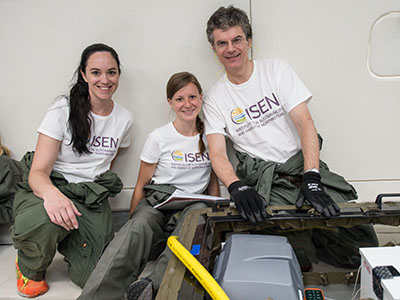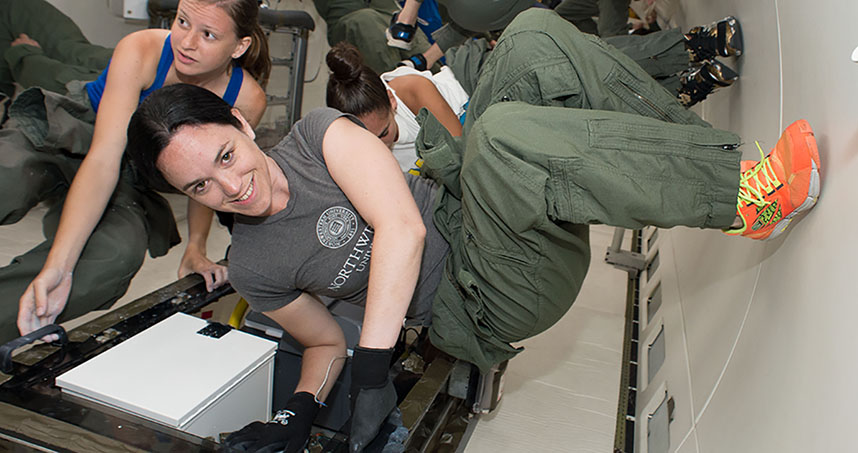Team to Fly on NASA’s Zero-Gravity Aircraft for Second Time
The student team will freeze-cast materials for solar cells
What is more unusual than performing an experiment on NASA’s “Weightless Wonder” reduced gravity aircraft? Performing an experiment on it twice.
A student team, advised by McCormick’s David Dunand, will return to Houston next month to board its second trip on the famed flight. They will repeat an experiment they first performed last June, during which they froze a mixture of titanium oxide nanoparticles and water to create a potential material for solar cells.
“NASA was interested in giving us a second flight, which is very rare,” said Dunand, the James N. and Margie M. Krebs Professor of Materials Science and Engineering. “There are many, many people who want to do this. It’s completely overbooked.”
 NASA uses a modified Boeing 727-200 aircraft that flies parabolas at high altitudes to create short periods of zero gravity to simulate the weightlessness of space flight. Led by Kristen Scotti, an undergraduate studying biology in Northwestern’s School of Professional Studies (SPS), the team will have four days of flight, experiencing 40 parabolas each day with 25 seconds of weightlessness during each parabola.
NASA uses a modified Boeing 727-200 aircraft that flies parabolas at high altitudes to create short periods of zero gravity to simulate the weightlessness of space flight. Led by Kristen Scotti, an undergraduate studying biology in Northwestern’s School of Professional Studies (SPS), the team will have four days of flight, experiencing 40 parabolas each day with 25 seconds of weightlessness during each parabola.
Other members of the team include McCormick undergraduates Kimberly Clinch and Emily Northard; Amelia Plunk, a master’s student in materials science and engineering; and Felicia Teller, an undergraduate in SPS.
During its NASA flights, the team will create foams made of titanium oxide, a highly absorbent solar cell material. When a suspension of titanium oxide nanoparticles in water is frozen, the ice crystals push the nanoparticles into regions where they are concentrated. Then the ice crystals are removed by sublimation, leaving behind a highly porous nanoparticle scaffold with more surface area to absorb more light. Dunand said the structures created in zero gravity are more regular than the ones created in the lab.
“Typically the nanoparticles settle at the bottom of the solution because of gravity, or they get mixed by convection during freezing,” he explained. “We’re ‘switching off’ gravity during the freezing experiment which prevents particle settling and convection. This allows us to better understand their unavoidable effects on Earth.”
Dunand said the team will also gain information about building solar cells in space to power future space habitats or space stations. “It doesn’t make sense to create solar cells here on Earth and then shoot them up on a rocket because they are fragile,” he said. “It makes more sense to shoot up raw materials and build the cells in space. The freeze-casting process is very inexpensive because you just need water, which is fully recycled, and titanium oxide nanoparticles, which you can create cheaply on Earth and pack easily as cargo in a rocket.”
The team is currently in talks to put their experiment on the International Space Station. Until then, they are looking forward to doing science — and a few cartwheels — in zero gravity.
“There is a feeling that I get on every flight,” Scotti said. “It comes after a few successful parabolas when I catch a glimpse of my teammates floating around and realize that we’re doing something that might actually work. It’s a feeling of intense pride that comes from being part of such a collective effort.”
